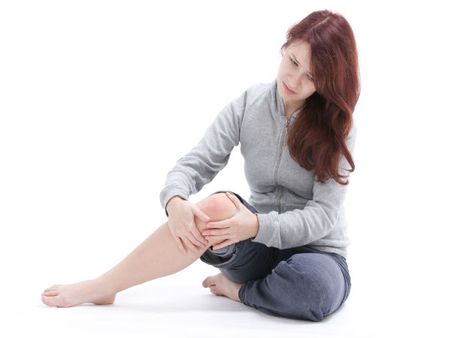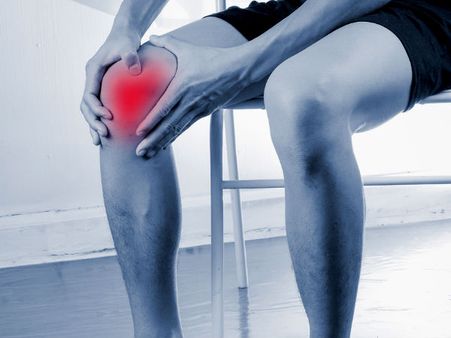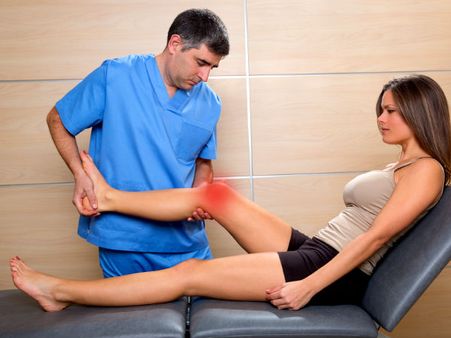Just In
- 46 min ago

- 4 hrs ago

- 5 hrs ago

- 10 hrs ago

Don't Miss
- Finance
 1:3 Bonus Share, Rs 13.25/Share Dividend: Buy Maharatna PSU, TP Rs 355, Fundraise Approved
1:3 Bonus Share, Rs 13.25/Share Dividend: Buy Maharatna PSU, TP Rs 355, Fundraise Approved - Sports
 Who Won Yesterday's IPL Match 33? PBKS vs MI, IPL 2024 on April 17: Mumbai Indians Escape Last-Ditched Fight by Punjab Kings To Win
Who Won Yesterday's IPL Match 33? PBKS vs MI, IPL 2024 on April 17: Mumbai Indians Escape Last-Ditched Fight by Punjab Kings To Win - Movies
 Do Aur Do Pyaar OTT Release Date & Platform: When & Where To Watch Vidya Balan’s Film After Theatrical Run?
Do Aur Do Pyaar OTT Release Date & Platform: When & Where To Watch Vidya Balan’s Film After Theatrical Run? - News
 BRS Chief K Chandrasekhar Rao Slams BJP, Says K Kavitha's Arrest Is Vendetta Politics
BRS Chief K Chandrasekhar Rao Slams BJP, Says K Kavitha's Arrest Is Vendetta Politics - Automobiles
 Aprilia RS 457 Accessories: A Detailed Look At The Prices
Aprilia RS 457 Accessories: A Detailed Look At The Prices - Education
 Karnataka SSLC Result 2024 Soon, Know How to Check Through Website, SMS and Digilocker
Karnataka SSLC Result 2024 Soon, Know How to Check Through Website, SMS and Digilocker - Technology
 Nothing Ear, Ear a With ANC, Up to 42.5 Hours of Battery Launched; Check Price and Availability
Nothing Ear, Ear a With ANC, Up to 42.5 Hours of Battery Launched; Check Price and Availability - Travel
Telangana's Waterfall: A Serene Escape Into Nature's Marvels
Osteoarthritis (Knee Osteoarthritis): Causes, Symptoms, Diagnosis, Treatment And Prevention
As per the Arthritis Foundation, arthritis is a common condition that affects more than 50 million adults and 300,000 children. It is most commonly among women and more frequently as people gets older. There are more than 100 types of arthritis and one of the most common types of arthritis is osteoarthritis (degenerative arthritis), which we are going to discuss in this article.
Osteoarthritis (OA), also known as degenerative joint disease is the most common type of arthritis that mostly affects the bones, cartilage and the synovium in the knee joint. Osteoarthritis most often occurs in people who are above 50 and older, but it may also occur in younger people [1].

What Causes Osteoarthritis? [1]
When the cartilage in the knee joint wears away, it becomes rough and the protective space between the bones decreases, as a result, the bones rub more closely against one another. This causes pain, swelling and stiffness. Osteoarthritis starts developing slowly and the pain may worsen over time. That is the reason why osteoarthritis has been often been referred to as " wear and tear" disease. Besides the damage to cartilage, osteoarthritis affects the entire joint as well.


Stages Of Osteoarthritis
- Stage 0 - It is classified as "normal" knee health. The knee joint shows no signs of osteoarthritis and the joint functions without any impairment or pain.
- Stage 1 - In this stage, the individual shows a very minor bone spur growth and will not experience any pain or discomfort due to the minor wear of the joint.
- Stage 2 - It is a mild stage of the condition.Here the cartilage will be usually in normal state and the space in between the joints will also be normal. X-ray can pick the bone spur growth. Synovial fluid levels will be similar to that of normal joint. However, people may start experiencing symptoms such as pain only after a long day of walking or running. Stiffness in the joint or tenderness in the joint when bending or kneeling.
- Stage 3 - It is defined as the "moderate" OA. In this stage, the cartilage between the bones are damaged and the space between the bones begin to narrow. People may experience frequent pain when walking, running, bending or kneeling and joint stiffness after sitting for a longer period of time.Joint swellings may or may not present.
- Stage 4 - This isdefined as the "severe" stage OA. People may experience enormous pain when they walk or move the joint because the cartilage is completely gone and the synovial fluid is decreased drastically, which leads to friction in between two bones.

Symptoms Of Osteoarthritis
• Gradual increase in pain most often but in some cases, there can be sudden pain.
• Swelling or tenderness. Hard swelling is due to bone spurs and soft swelling can be due to the inflammation which causes extra fluid collection around joint.
• Stiffness in the knee.
• Decrease in knee mobility like difficulty in getting in and out of the car, difficulty in sitting or getting up from the chair or difficulty while using the stairs.
• When the knee moves there is a cracking or popping sound. These are nothing but crepitus.
• Bone spurs (a bony growth that develop along the edges of a bone). [2].


Risk Factors Of Osteoarthritis
The most common risk factors of osteoarthritis are:
- Age - Older age is a risk factor as the risk increases with age [1].
- Obesity - If a person is obese, he/she has the highest possibility of getting osteoarthritis. Maintain your weight to lower your risk [3].Fat tissues can cause some changes like harmful inflammation in and around joints.
- Gender - Women are more likely to get osteoarthritis as compared to men [1]. The reason being, women who are in their menopause often gain weight and this can increase the stress on the joints.
- Heredity - Individuals born with bone diseases or genetic traits can develop osteoarthritis.
- Repetitive stress injuries - Individuals who perform daily activities like kneeling, squatting or lifting heavy weights can cause stress in the joint.
- Athletics - Athletes involved in tennis, soccer or long-distance running may also develop osteoarthritis.
- Other illnesses - Rheumatoid arthritis, gout, diabetes, abnormal joints at birth and repeated trauma or surgery to the joint structures.


Complications Of Osteoarthritis
•
Severe
joint
pain.
•
Experiencing
extreme
stiffness
in
the
joints.
•
Depression
and
sleep
disturbances
resulting
from
the
osteoarthritis
pain.

Diagnosis Of Osteoarthritis
The doctor will conduct a physical examination and check your knees for tenderness, swelling and pain. After which the doctor orders some diagnostic tests that need to be done. These include the following:
• X-rays - An X-ray is done to check whether there are any bone spurs around a joint [4].
• MRI - MRI scans show detailed images of bone and cartilage. It can help detect early symptoms of osteoarthritis [4].
• Joint fluid tests - The doctor uses a needle to take out fluid from an affected joint, which is then tested for inflammation. This test is done to determine whether your pain is caused by gout or any other infection.
• Blood tests - Blood tests can rule out other diseases like rheumatoid arthritis and gout.

Treatment Of Osteoarthritis
The treatment depends on the stages of osteoarthritis [5].
Stage 0
- No treatment is needed for stage 0 OA.
- Over-the-counter pain-relieving medications and nonsteroidal anti-inflammatory drugs can help ease mild to moderate pain.Along with the will advise to begin an exercise routine to relieve minor symptoms.
- Attending a physical therapy session to increase flexibility and strengthen the muscles around the joint and help lower pain.
- Taking pain-relieving medications.
- Wearing a knee brace to reduce pressure on the surfaces of the joints.
- Wearing shoe inserts or braces to lower the stress on the knee joint.
- Avoid Kneeling, squatting or jumping.
- Non pharmacological therapies do not work in this stage.
- Doctor will advise you to start taking corticosteroids.
- Takingintra articular injections of corticosteroid medications to relieve pain on the knee joint.
- Surgical procedures such as knee osteotomy (cutting of the bone to correct the alignment of the knees) and arthroplasty (completely replacing a damaged joint with plastic and metal parts).
Stage 1
Stage 2
Stage 3
Stage 4

Prevention Of Osteoarthritis
•
Maintain
a
healthy
weight.Not
to
stress
your
body
with
extra
weight.
•
Control
your
blood
sugar
levels.
•
Practice
moderate
exercise
daily
[6]
•
Avoid
stressing
your
knees
muchwith
rigorous
activities.
•
Lower
your
risk
ofgetting
trauma.

-
 healthOsteoarthritis (OA): Expert Shares Signs, Causes, Symptoms And Treatments
healthOsteoarthritis (OA): Expert Shares Signs, Causes, Symptoms And Treatments -
 wellnessWorld Bicycle Day 2022: Cycling And Arthritis; Are There Any Benefits? Is Indoor Or Outdoor Cycling Better?
wellnessWorld Bicycle Day 2022: Cycling And Arthritis; Are There Any Benefits? Is Indoor Or Outdoor Cycling Better? -
 wellnessExpert Article: Robotic Knee Replacement For Osteoarthritis
wellnessExpert Article: Robotic Knee Replacement For Osteoarthritis -
 disorders cureOsteoarthritis: 7 Tips To Take Care Of Your Joints
disorders cureOsteoarthritis: 7 Tips To Take Care Of Your Joints -
 wellnessHow to Cure Knee Pain Naturally? Here Are 8 Ways to Do So
wellnessHow to Cure Knee Pain Naturally? Here Are 8 Ways to Do So -
 wellness8 Foods For Osteoarthritis Treatment In Ayurveda
wellness8 Foods For Osteoarthritis Treatment In Ayurveda -
 wellnessCan Knee Pain Lead To Depression?
wellnessCan Knee Pain Lead To Depression? -
 wellnessHow Exercise, Good Diet Helps Prevent Osteoarthritis
wellnessHow Exercise, Good Diet Helps Prevent Osteoarthritis -
 wellnessNoisy Knees May Predict Osteoarthritis
wellnessNoisy Knees May Predict Osteoarthritis -
 wellnessHow To Treat Arthritis (Osteoarthritis) With Ayurveda In Elderly
wellnessHow To Treat Arthritis (Osteoarthritis) With Ayurveda In Elderly -
 disorders cureWhat Are The Symptoms Of Arthritis?
disorders cureWhat Are The Symptoms Of Arthritis? -
 healthIs Treadmill Harmful For Your Knees? Who Should Avoid It? Things To Keep In Mind
healthIs Treadmill Harmful For Your Knees? Who Should Avoid It? Things To Keep In Mind


 Click it and Unblock the Notifications
Click it and Unblock the Notifications



